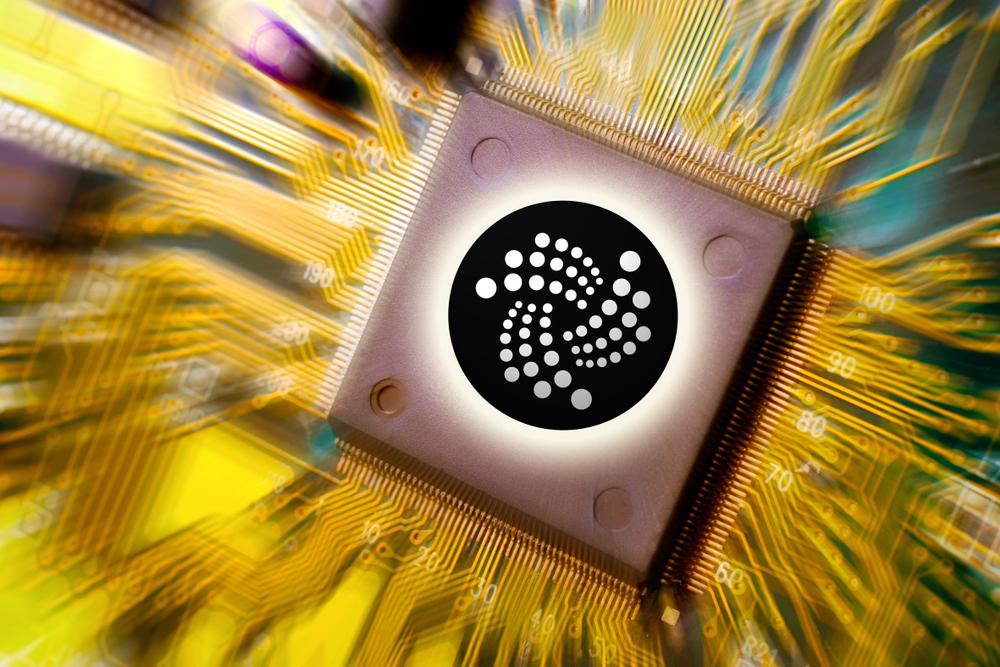- A developer has presented Espiota yesterday, a powerful microcontroller designed to enable IOTA transactions between any electrically powered computer.
- For the prototype, the developer has applied for a grant from the IOTA Ecosystem Development Fund.
A German developer from Hamburg has developed a prototype of a micropayment device that specializes in receiving and sending IOTA. The device, called Espiota, is a tiny configurable device that allows any electrically powered computer to trigger a specific action when an IOTA payment is received.
In the post on Medium published yesterday, the developer, Oosting, writes that a few months ago he started exploring the ESP32, a tiny but powerful microcontroller with integrated WIFI. His goal was to create a pre-installed product that would allow any device to use IOTA. Espiota was born from this idea.

The device is fully configurable and requires no knowledge of software development. So far it is only a prototype. However, Oosting has already submitted its development to the IOTA Ecosystem Development Fund and applied for a grant.
https://twitter.com/oostech_hh/status/1206869496369221632
Any device could send IOTA payments
Espiota fits perfectly into IOTA’s concept, as the cryptocurrency that is designed as the backbone of the Internet of Things (IoT) and serves as the basis for machine-to-machine transactions. With Espiota, numerous electrically powered devices could be upgraded in the future to automatically perform actions between machines after a payment has been made with IOTA.
Oosting has introduced two versions of Espiota. While the first version (shown above) has buttons and a display that shows the current balance, remaining time and a QR code, there is a second, smaller model that can be built into machines. The first model can be connected “with basic knowledge of electricity”.
As the blog post goes on to say, the device basically has two operating modes: “Pay-for-Time” and “Pay-For-Action”. The standard mode is Pay-for-Time, as Oosting explained:
Imagine an air condition in a hotel room. The owner specifies a time period (seconds, minutes, hours, days, weeks) and the price in IOTA to use the air condition for the chosen period. He could configure Espiota to activate the air condition for a price of 10 Miota a day. When a guest pays 10 Miota to the specified address, Espiota activates the air condition for 24 hours.
In addition to switching the main circuit of a machine (Pay-For-Time), Espiota can also trigger other actions, such as dispensing coffee while the state of the machine is being observed (Pay-For-Action).
Espiota could be used for smart homes, safes, electricity meters, and more
To test his prototype, Oosting first connected his device to an unused smart car. He said that this was “super easy” because both models operated at 5V and did not require a voltage converter or relay:
After writing the basic code I digged out an unused smart car and connected the ESP32 which was super easy as the car and the ESP32 both run on 5V and therefore no voltage converter or relay is needed. I sent some IOTA to the car and it turned on like expected for the configured amount of time.
Once this “simple test” has worked, Oosting developed a standard socket that can connect “any device in seconds”.
I am working on an Espiota powered safe and a coffee machine. Espiota can be configured to wait for the boiler to be ready, to know if coffee is being dispensed or to pause charging IOTA if the door of the safe is open.
Oostings is also planning a smart IOTA electricity meter that could be used in hotels, for example, to measure actual electricity consumption:
I have the rough idea of integrating an electric meter into Espiota. This would enable to connect Espiota into the main electricity circuit of a house or an appartment, just like your energy provider does. It would be particularly useful for hotel rooms or AirBnB appartments. Instead of maintaining one Espiota for each device, a single Espiota could be used for the whole appartment. Furthermore the customer could pay the electricity he actually uses instead of being charged a fixed amount that might be unreasonably high or low.
Follow us on Facebook and Twitter and don’t miss any hot news anymore! Do you like our price indices?
Recommended for you:
Subscribe to our daily newsletter!
No spam, no lies, only insights. You can unsubscribe at any time.




